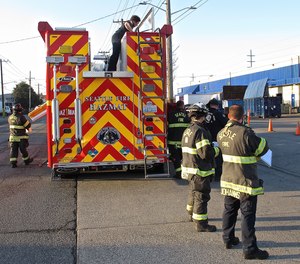- Topic 3 Hazardous Environmentsgeography
- Hazardous Environments Roblox Id
- Hazardous Environments Half Life
Hazardous Earth – Explore tectonic processes, the theory of plate tectonics, plate margins, volcanic landforms and earthquake hazards.
There is a variety of evidence for the theories of continental drift and plate tectonics.
Theories of continental drift and plate tectonics including:
Topic 3: Hazardous environments – the characteristics and distribution of different types of natural hazard, the measurement and impacts of hazards and detailed case studies of the management of a tropical cyclone in a developed and a developing or emerging country. Hazardous Earth – Explore tectonic processes, the theory of plate tectonics, plate margins, volcanic landforms and earthquake hazards. There is a variety of evidence for the theories of continental drift and plate tectonics. Theories of continental drift and plate tectonics including.
- the basic structure of the Earth including the lithosphere, asthenosphere and the role of convection currents
- evidence from ancient glaciations
There are distinctive features and processes at plate boundaries.
Earth’s crustal features and processes, including:
- the global pattern of plates and plate boundaries
There is a variety of volcanic activity and resultant landforms and landscapes.
Different types of volcanoes to investigate their causes and features including:
- eruptions not at plate boundaries (hot spots) such as the Hawaiian chain and the East African Rift Valley
- size and shape of different types of volcanoes, including super-volcanoes

Volcanic eruptions generate distinctive hazards.
Different types of volcanic eruptions and the different types of hazards they generate including:
- lahars and flooding associated with the melting of ice
- tsunamis associated with explosive eruptions.
There is a variety of earthquake activity and resultant landforms and landscapes.
Earthquake characteristics to investigate their causes and features including:
- shallow-focus earthquakes
- deep-focus earthquakes
- the different measures of assessing earthquake magnitude (Richter, moment magnitude scale, modified Mercalli intensity scale)
- the effects earthquakes have on landforms and landscapes including the development of escarpments and rift valleys.
Earthquakes generate distinctive hazards.
Hazards generated by earthquakes, including:
- ground shaking and ground displacement
- liquefaction
- landslides and avalanches
- tsunamis associated with sea-bed uplift and underwater landslides
- flooding.
There is a range of impacts people experience as a result of volcanic eruptions.
Case studies of two countries at contras ng levels of economic development to illustrate:
- reasons why people choose to live in tectonically active locations
- the impacts people experience as a result of volcanic eruptions
- economic, environmental and political impacts on the country.
Topic 3 Hazardous Environmentsgeography
There are a range of impacts people experience as a result of earthquake activity.
Case studies of two countries at contras ng levels of economic development to illustrate:
- reasons why people choose to live in tectonically active locations
- the impacts people experience as a result of earthquake activity
- economic, environmental and political impacts on the country.
Hazardous Environments Roblox Id
There are various strategies to manage hazards from volcanic activity.
Case studies of two countries at contrasting levels of economic development to illustrate strategies used to cope with volcanic activity including:
- attempts to mitigate against the event, such as lava diversion channels
- attempts to mitigate against vulnerability such as community preparedness
- attempts to mitigate against losses, such as rescue and emergency relief.

There are various strategies to manage hazards from earthquakes.
Case studies of two countries at contras ng levels of economic development to illustrate strategies used to cope with hazards from earthquakes including:
- attempts to mitigate against the event such as land-use zoning
- attempts to mitigate against vulnerability such as building design
- attempts to mitigate against losses such as insurance.
The exposure of people to risks and their ability to cope with tectonic hazards changes over me.
How and why have the risks from tectonic hazards changed over me including:
- changes in the frequency and impacts of tectonic hazards over me
- the degree of risk posed by a hazard and the probability of the hazard event occurring (the disaster risk equation)
- possible future strategies to cope with risks from tectonic hazards.
Hazardous Environments Half Life
- The relationship between disaster and response including the Park model.

